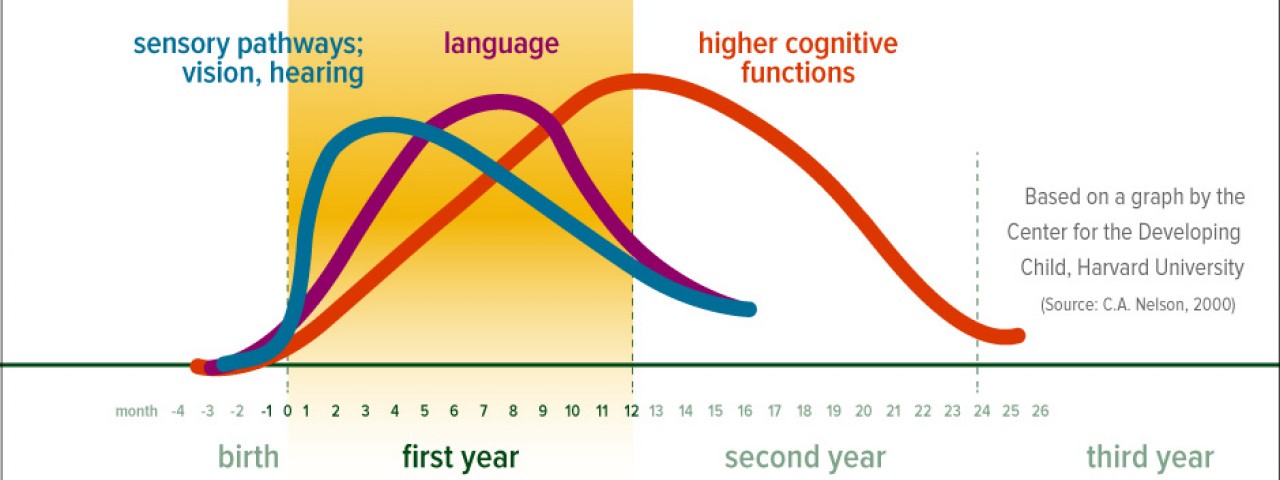A Case for Early Detection of Hearing Loss in Young Children
- Tweet

Thirty-three babies are born each day in the United States with significant hearing loss.1 In Shelby County, there are about 400 children currently living with hearing impairments. Hearing impairments can jeopardize the healthy development of speech and language, which are absolutely critical to a child’s ability to learn and interact. Early identification of a hearing impairment is essential to prevent barriers to academic achievement, social acceptance, and emotional well-being.2 As with other common childhood disorders, treatment is most effective when started as early as possible, preferably before six months of age. However, almost 50% of newborns with hearing loss are not diagnosed until age two.1 By understanding what constitutes normal hearing development, parents can monitor their child’s progression, and thereby encourage healthy language and social skills.
What is Normal Hearing Development?
By increasing their awareness of a baby’s normal development, parents can more readily recognize signs of a hearing impairment. Hearing is processed in the primary auditory cortex of the brain. This cortex responds accordingly to the Brodmann areas 41 and 42 that are inside the cerebral cortex located on the temporal lobe. The primary auditory cortex is responsible for receiving the input from both ears and also transmitting signals back to the ears and related parts of the brain. If a baby’s auditory system is functioning and developing properly, parents should expect:
- From birth to 3 months, their baby reacts to loud sounds, becomes quiet when hearing familiar voices, and uses separate cries to indicate different needs.3
- Babies 4 to 6 months old respond to speech by locating sources of sounds (like from toys, parents, or other noises) with their eyes, and begin to babble in a speech-like pattern.3
- During 7 months to 1 year of age, babies will babble to gain attention, listen when spoken to, imitate speech patterns, and respond to vocal requests.3
- Between 1 & 2 years of age, children can put two words together to express wants and needs (like “More Milk!”) and locate sounds coming from all directions.
- At 2 years old, a child can talk in a way that can be understood by family members and can form sentences with four or more words.3
To find out more about the way children’s hearing develops, go to the website for the National Institute on Deafness and other Communication Disorders.
Identifying and Remedying Hearing Impairment
Hearing impairments do not have to mean developmental delays, but the threats of hearing impairments start at birth. In order to identify hearing impairments in newborns, every Tennessee hospital provides hearing screenings. The Tennessee Department of Health recommends that children should be screened for hearing impairments before leaving the hospital or before one month of age. Doing so allows hospitals the opportunity to identify possible auditory impairments that would otherwise go unnoticed. The longer a problem goes unnoticed, the more it can affect a child’s overall development. Additionally, pediatricians should screen children for hearing loss multiple times in the first three years. More detailed information can be found at www.infanthearing.org and www.babyhearing.org.
Effects on Language Development
Without interventions, children with hearing loss develop vocabulary at a slower rate and tend to use shorter sentences.4 By relying on only simple sentences, these children may encounter difficulty with expressing more complex thoughts. As children with hearing loss are often not able to hear the endings of ‘s’ or ‘ed’, they leave these sounds out of their own speech, and may be misunderstood by others.4 As these speech and communication skills are building blocks for later learning and social interaction, early difficulties in understanding and producing language can lead to a multitude of future problems. Other signs of hearing loss at age 2 & 3 years could be increased volume on radio or television, failure to respond to conversational-level speech, and limited or inadequate speech patterns.5
Socioemotional Challenges
Perhaps most importantly, these language deficiencies often lead a child to experience frustration in expressing their needs and wants as their communication and speech skills are limited.4 The language deficits resulting from hearing loss can contribute to social isolation of children since children with profound hearing loss tend to be unhappier in school and with fewer friends when compared to their peers with normal hearing.4 Moreover, young students with impaired hearing report an inferior self-image, suggesting a toll on positive identify formation.4 Since these early years are vital to building confidence, early detection and intervention of hearing loss are necessary to avoid these adverse effects on a child’s emotional well-being.
Academic Challenges
Students with hearing impairments often experience challenges inside the classroom as well. Because some of these children are unable to interpret words with multiple meanings, they may fall behind on key ideas in a teacher’s lesson.4 As schooling progresses, the academic achievement gap between children with normal hearing and their peers with hearing loss can continue to expand.4 Although all academic areas can be impacted, these children tend to show the most difficulty in understanding math and reading concepts.4 Without the necessary interventions, children with mild to moderate hearing losses achieve one to four grade levels lower than their classmates.4 However, research emphasizes that the earlier difficulties are identified, the greater the reduction in future impact.4
References:
